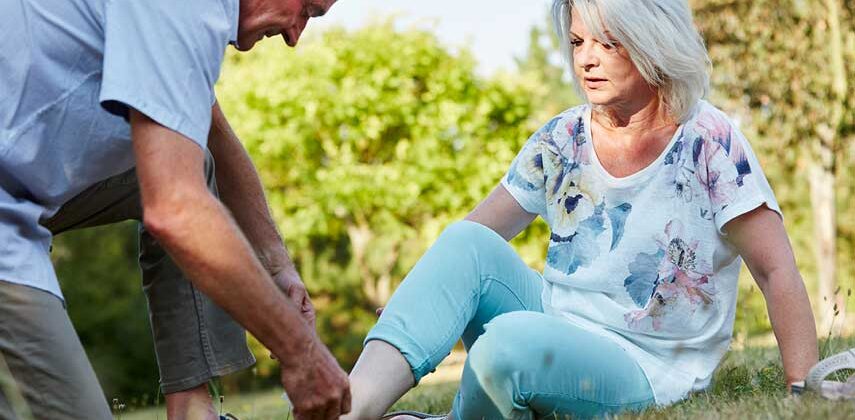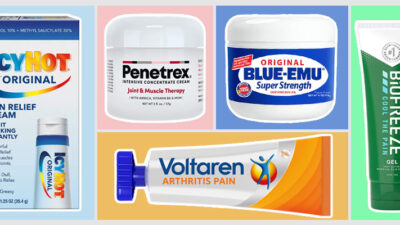Many people believe that joint pain is an inevitable part of growing old. It’s true that as you reach the twilight years, you might experience stiffness here and there. But did you know that lifestyle, strenuous activities, sports injuries, and even car accidents in the past can contribute to the aches you might be feeling now? So, that knee strain or back pain you’re suffering now may be partly due to past accidents and injuries.
Fortunately, it’s not the end of the world if you have these aches and pain as there are plenty of natural ways you can manage this problem. You must be open to trying different things and determine what works for you through trial and error. So, the next time a family member or a friend asks you to see this website or look at a magazine article that features joint pain, you should probably heed their advice and check them all out.
If you’re serious about addressing pesky joint pain right now, you might want to try the following natural ways to manage pain and see which one works best for you.
1. Get A Dose Of Exercise
The best way to attack joint pain is to do things that can help prevent it in the first place. Exercise plays a vital role in reducing strain, develop your flexibility, build up your muscles, and promote weight loss. All of these can help protect your joints.
Some exercises that are fun and have a low impact on your joints are swimming and walking. If you want to stay home to avoid getting colds and flu during the cold months, you can use elliptical machines to get your exercise routine going.
2. Watch What You Eat
Since eating is an activity that you do several times a day, why don’t you use it to help manage your chronic pain? First, you should add more veggies, fruits, and whole grains to your diet because they contain vitamins and minerals that you need to make your bones more robust, develop muscles, and manage your weight. For your protein needs, you might want to increase your consumption of fishes that are rich in omega-3 fatty acids, which help minimize inflammation, such as salmon and cod.
Meanwhile, stay away from highly-processed food, gluten, too much salt, added sugar, and saturated fat because these things can promote inflammation and may make you gain more weight, which can be bad for your joints.
3. Incorporate Some Herbs In Your Diet
Some herbs are known to provide considerable benefits to reducing joint inflammation and pain. You can take them as a supplement, a drink, or add them to your stew, tea, or meals. But if you have maintenance medication, it’s best to consult with your doctor because some herbs may reduce potency in some medicines.
Examples are:
- Turmeric, a well-known herb in India that offers healthful benefits, including management of joint pain. This yellow herb contains curcumin, a compound that’s effective in easing inflammation. You can add turmeric to your meals and drinks. Be experimental and try Indian cuisine that deliciously incorporates it into the recipes.
- Aloe vera is another herb that you can incorporate in your drink or take as a supplement. This plant is high in antioxidants that prevent the production of enzymes responsible for inflammation in the body.
- Eucalyptus, frankincense, and borage oil are beneficial herb-based ingredients you can add into your warm bath, use as a massage oil, or even inhale via aromatherapy.
4. Try Heat or Cold Therapy
Many pain doctors recommend hot or cold compress for aches and pain. This therapy is beneficial for people who have arthritis and other joint discomforts primarily caused by inflammation. However, be ready for some trial and error to determine the proper heat and cold combination that works best for your situation.
If you feel stiffness and muscle pain, you should do heat therapy because heat promotes blood circulation, minimizes muscle spasms, and decreases pain sensation. You can apply heat to the affected area by taking warm baths or using heating lamps or pads. For swelling, a cold compress is what you need because it helps constrict blood vessels and numb the pain.
5. Have A Massage
Massage therapy isn’t only good for relieving stress and boosting sleep. Many people also use it to reduce joint pain and inflammation. So, how does massage help?
First, massage therapy’s rubbing and stroking techniques help relieve muscle tension, improve blood circulation, and relax the mind and the body. Some massages even include stretching techniques that help improve muscle flexibility and strength.
Next, you can use essential oils, gels, and other topical rubs to maximize the benefit you can get from your massage. As mentioned earlier, eucalyptus is effective for joint ailments when inhaled or rubbed in the body. You can also ask your masseuse to use products with capsaicin, which is a compound responsible for the heat in chili peppers, to address deep pain.
6. Dabble With Alternative Therapies
Suppose you’re suffering from chronic pain but don’t want to rely too much on pain medication relief. In that case, you can experiment with some esoteric techniques based on ancient or traditional medicine from other parts of the world.
Here are some treatment modalities that have worked for many people, and maybe they’ll work for you, too:
- Meditation is a mind-over-matter means of dealing with pain. With relaxation and calming techniques, you’ll train your mind to slowly ease your joint aches and pain.
- Tai Chi, which is an Oriental form of martial art, is popular with seniors because it’s easy to follow and provides many health benefits. Use this activity to improve muscle strength and prevent joint stiffness.
- Acupuncture makes use of thin needles to target specific points in your body to address many health problems, such as arthritis and other pain caused by inflammation. If you’re afraid of getting pricked by needles, then this may not be for you. But the needles are so thin that you would barely feel them, so the benefits outweigh the inconvenience of acupuncture.
Bottom Line
Chronic joint pain can be debilitating as it affects the daily lives of a lot of people, old and young alike. If you suffer from this severe problem, you might want to try proven ways to manage joint pain naturally.







 This article changed my life!
This article changed my life! This article was informative.
This article was informative. I have a medical question.
I have a medical question.
 This article contains incorrect information.
This article contains incorrect information. This article doesn’t have the information I’m looking for.
This article doesn’t have the information I’m looking for.